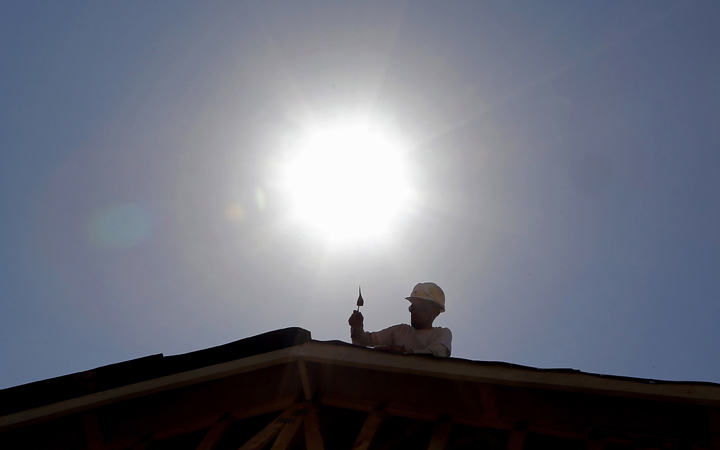WASHINGTON – Hotter days mean less cold cash for Americans, according to a new study matching 40 years of temperatures to economics.

Days that averaged about 25 C (77 F) ended up reducing people’s income by about $5 a day when compared with days that were significantly cooler. A county’s average economic productivity decreases by nearly 1 per cent for every degree Fahrenheit that the average daily temperature is above 15 C (59 F), says a National Bureau of Economic Research working paper released Monday.
READ MORE: Climate change denial is like saying moon ‘made of cheese’: Obama
And, the study’s authors predict, if the world continues on its current path of greenhouse gas emissions, even warmer temperatures later this century will squeeze the U.S. economy by tens of billions of dollars each year.
This is not from storms, drought or other weather disasters — just the sweat of daily heat.
The paper by a pair of economists at the University of Illinois and University of California, Berkeley, has not yet been peer-reviewed but is part of work done for the non-partisan economics research centre that is widely cited for determining when the country is in and out of recessions. In comments from other researchers, the new study was criticized for its methods and conclusions by some economists and policy experts but praised by others as groundbreaking.
The study tries to find common ground between the hard physical science of meteorology and the softer science of economics. In doing so, the researchers used new complex statistical techniques crunching more than 76,000 data points, including daily temperatures and yearly economic data in counties across America, said co-author Solomon Hsiang of the University of California, Berkeley.
The numbers were clear, the researchers said.
“Hot temperatures are very bad for the economy,” said study co-author Tatyana Deryugina, a professor of finance at the University of Illinois.
This has been seen in other studies in hotter, less developed areas such as India. But scientists and economists often assumed it wouldn’t be the case for richer countries with air conditioning, like the United States, said Hsiang, who teaches public policy. But America’s economy doesn’t adapt as experts thought, said Hsiang, who examined all U.S. counties’ daily temperature and yearly economic data going back to 1970.
READ MORE: European Union’s greenhouse gas emissions drop in 2013
Hsiang said the “sweet spot” where productivity is maximized — a daily average temperature around 15 C (59 F) — at first seemed cooler than expected, but that’s an average 24-hour temperature. Daily highs can be somewhat warmer and lows cooler. So these are days when the afternoon is around 21 C (70 F).
While most people work indoors in climate-controlled settings they still go outside a lot, and hot weather elevates body temperature for a while, affecting how people work, Hsiang said.
“These are little things that add up,” Hsiang said. “It’s not like a hurricane. … This is more like a story of deaths by a thousand cuts.”

Comments